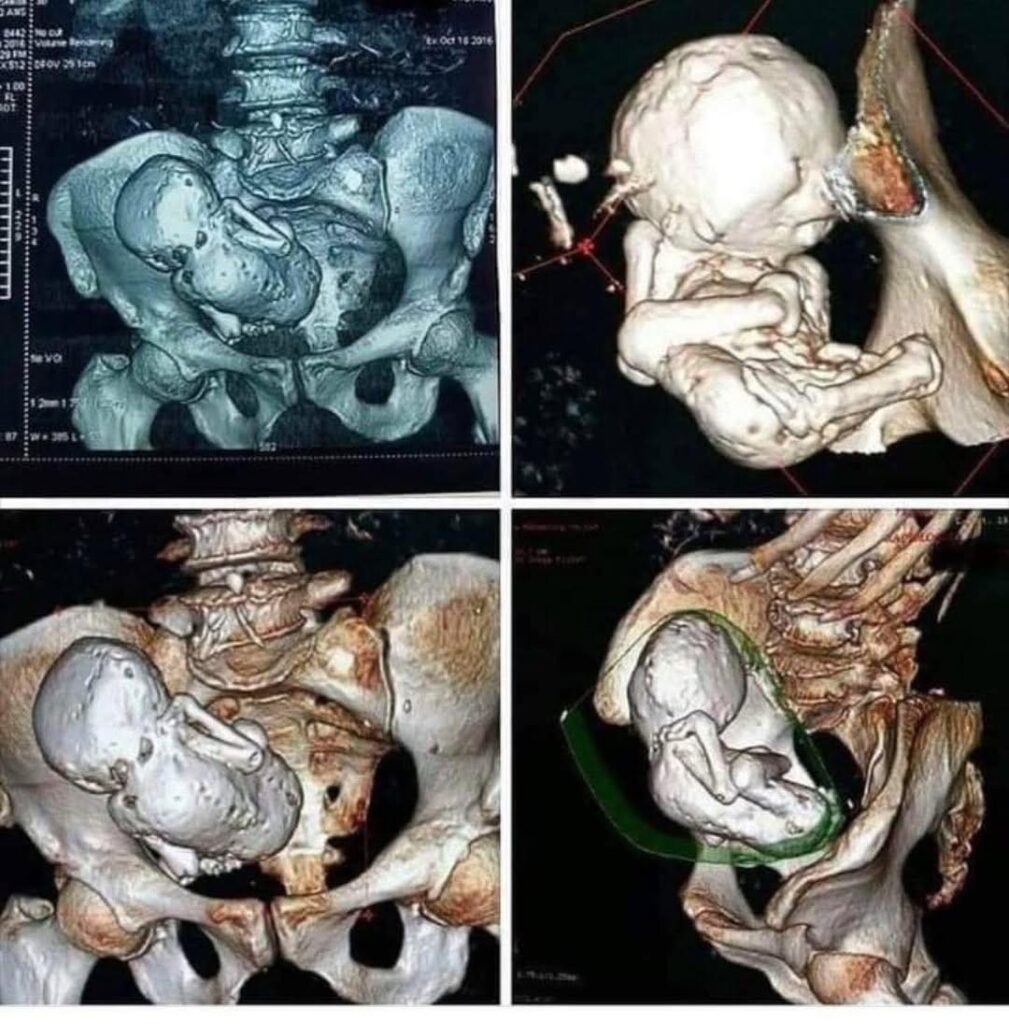Every so often, the world of medicine stumbles upon something so rare, so unbelievable, that even seasoned doctors pause in awe. One such story unfolded when a 73-year-old woman visited a hospital, complaining of vague abdominal discomfort. What doctors found during a CT scan was beyond anyone’s expectations—a calcified fetus that had been inside her body for over 30 years.
Yes, you read that right. A fetus. Fully calcified. Hidden within her abdomen for three long decades.
This medical phenomenon has a name: lithopedion, a word derived from Greek roots—”lithos” meaning stone, and “paidion” meaning child. Colloquially referred to as a “stone baby,” a lithopedion is what occurs when a fetus dies during an ectopic or abdominal pregnancy but is never expelled by the body. Instead, the fetus remains inside, unnoticed and undisturbed, as the body slowly encases it in layers of calcium, essentially turning it into stone.
It sounds like something straight out of an old myth, but it’s very real—just exceptionally rare. Fewer than 400 documented cases have surfaced in medical literature over the past 400 years.
In this particular case, the woman had no idea she had been carrying the remains of a fetus for most of her adult life. The pregnancy likely began normally but turned dangerous somewhere along the way. Rather than ending in miscarriage or stillbirth with typical symptoms, her body silently adapted. It’s believed that the fetus died during the second trimester—a stage where the fetus is already significantly developed. But instead of triggering contractions or bleeding, the body didn’t react in the usual way.
Instead, it did what the human body sometimes does best—it protected itself.
When faced with a non-viable mass it couldn’t safely eliminate, the body effectively walled it off. The immune system started the calcification process, layering the fetus in minerals over time, until it resembled bone or stone. This biological “defense mechanism” prevents infection, inflammation, or any immune reaction to decomposing tissue. What results is a perfectly preserved, fossil-like fetus tucked away in the abdominal cavity—harmless, silent, and invisible unless detected through imaging.
The CT scans tell the story more vividly than words ever could. In the images, you can clearly see the fetal skeleton curled up inside the pelvic region, almost perfectly intact. The spine, the tiny limbs, even the skull—all encased in a hardened shell of calcium that preserved its structure through time.
It’s hauntingly beautiful in its own way. A reminder of how the human body adapts, even in the most extraordinary circumstances.
Doctors believe that this lithopedion had likely been inside her for over 30 years, dating back to a pregnancy she either didn’t know about or thought had ended normally. In some cases, women with lithopedions remember an abrupt end to a pregnancy, followed by relief of symptoms. But since there’s no external miscarriage or bleeding, and because the fetus is outside the uterus, many simply move on, unaware of what remains inside.
What makes this case even more fascinating is how little disruption it caused. For decades, this woman went about her life with a calcified fetus in her abdomen—no major symptoms, no chronic pain, and no life-threatening complications. It’s both eerie and miraculous.
Why Lithopedion Happens (and Why It’s So Rare)
Lithopedion occurs under a very specific set of circumstances:
- The pregnancy must be ectopic or abdominal—meaning it happens outside the womb.
- The fetus must die, typically in the second trimester.
- The deceased fetus must be too large for the body to absorb.
- And the body must not recognize the need to expel it.
Instead of causing infection, the body essentially embalms the fetus in calcium to isolate it, making it inert. Think of it as nature’s version of preservation—fascinating, functional, and very rare.
Can It Be Dangerous?
While many lithopedion cases go unnoticed for years, sometimes they can lead to complications. Pressure on nearby organs, obstruction of the intestines, or unexpected abdominal pain are a few possibilities. That’s why modern imaging is so important—CT scans, ultrasounds, and MRIs can catch things our bodies hide too well.
Fortunately, in this case, the discovery was made in time, and the woman’s health was closely monitored. She had gone three decades without issues, and doctors determined that surgical removal wasn’t necessary unless complications arose.
Final Thoughts
There’s something deeply moving about this story. Beyond the science and shock value, there’s a quiet poetry to it—a life that never came to be, quietly resting inside its mother for decades, unnoticed but not entirely forgotten.
Lithopedion may be a rare medical anomaly, but it’s also a powerful testament to the human body’s resilience and mystery. In a world where technology explains so much, this strange little corner of medicine reminds us that nature still holds secrets we haven’t fully unlocked.
So the next time you hear a term like “stone baby,” don’t assume it’s urban legend or medical fiction. Sometimes, the most unbelievable things are hiding right inside us—waiting decades to be discovered.


